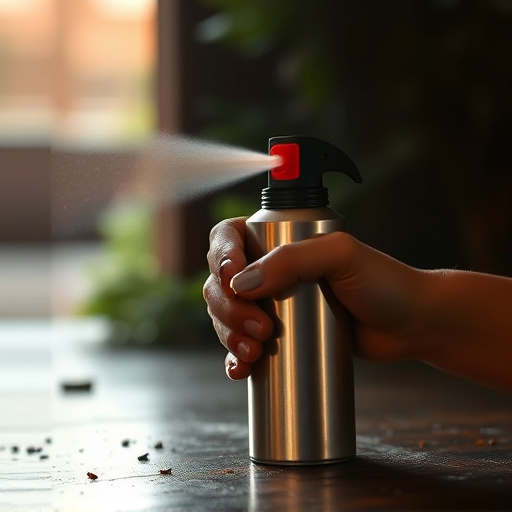Environmental conditions significantly alter the performance of pepper spray. Wind disperses it quickly, humidity slows evaporation, and dry air accelerates evaporation, affecting range, potency, and duration. Optimal deployment requires considering wind direction, humidity levels, temperature, visibility, and atmospheric pressure to maximize effectiveness.
“Oleoresin capsicum (OC) spray, a powerful defensive tool, has gained popularity for its ability to deter aggression and provide self-defense. This article delves into the science behind OC spray, exploring its composition and effectiveness. We also uncover how environmental conditions significantly affect its performance, offering insights on optimal deployment strategies. Understanding these factors is crucial for maximizing the potential of OC spray as a defensive measure in various scenarios.”
- Understanding Oleoresin Capsicum (OC) Spray: Composition and Effectiveness
- Environmental Factors Influencing OC Spray Performance
- Optimal Conditions for Deploying OC Spray as a Defensive Tool
Understanding Oleoresin Capsicum (OC) Spray: Composition and Effectiveness
Oleoresin capsicum (OC) spray, also known as pepper spray, is a defense tool made from the active components extracted from chili peppers. Its composition includes capsaicin, the chemical responsible for the spicy sensation, along with other volatile oils and resins. When sprayed, OC irritates the eyes, nose, throat, and skin, causing temporary blindness, difficulty breathing, and intense pain. This disruption can give users valuable time to escape or deter an attacker.
Environmental conditions significantly affect the effectiveness of OC spray. Wind, for instance, can dissipate the spray quickly, reducing its impact range. Humidity levels also play a role; in moist environments, the spray may not dry as rapidly, potentially prolonging its effects. Conversely, very dry conditions can cause the spray to evaporate too quickly, limiting its duration. Understanding these variables is crucial for users to employ OC spray optimally in various outdoor and indoor settings.
Environmental Factors Influencing OC Spray Performance
The performance of oleoresin capsicum (OC) spray, a popular self-defense tool, can be significantly influenced by various environmental conditions. Environmental factors play a crucial role in determining the effectiveness and range of OC spray. For instance, temperature and humidity levels can affect the viscosity and evaporation rate of the spray, impacting its reach and potency. In hot and humid environments, the spray may dry up faster, reducing its impact, while colder temperatures can make it thicker, potentially hindering application.
Wind conditions are another critical aspect; strong winds can disperse the spray particles, minimizing their concentration at the target area. Additionally, atmospheric pressure variations might alter the spray’s projection distance. Understanding these environmental influences is essential for users to deploy OC spray optimally and ensure its intended results in different settings.
Optimal Conditions for Deploying OC Spray as a Defensive Tool
The effectiveness of oleoresin capsicum (OC) spray as a defensive tool is heavily influenced by environmental conditions, making it crucial to understand these factors for optimal deployment. Weather plays a significant role; ideal conditions include low humidity and mild temperatures, which ensure the spray maintains its potency. High humidity levels can cause OC spray to dry out or lose strength faster, reducing its impact on potential aggressors. Additionally, wind direction is critical; deploying the spray into the face of an attacker is more effective than downwind, where the spray might disperse before reaching its target.
Lighting conditions also matter. In low-visibility scenarios, such as night-time incidents or enclosed spaces with limited lighting, OC spray can be less predictable in its trajectory and impact area. Conversely, good visibility allows for more precise application, increasing the chances of neutralizing an attacker successfully. Knowing these environmental factors enables users to time their deployment strategically, maximizing the defensive capabilities of OC spray under various circumstances.
The effectiveness of oleoresin capsicum (OC) spray as a defensive tool is significantly influenced by environmental conditions, such as temperature, humidity, and wind speed. Understanding these factors is crucial for optimal deployment, ensuring the spray’s potency remains high when needed most. By considering the Environmental Conditions Affect Pepper Spray, individuals can maximize its utility as a personal defense mechanism, providing peace of mind in various outdoor scenarios.
